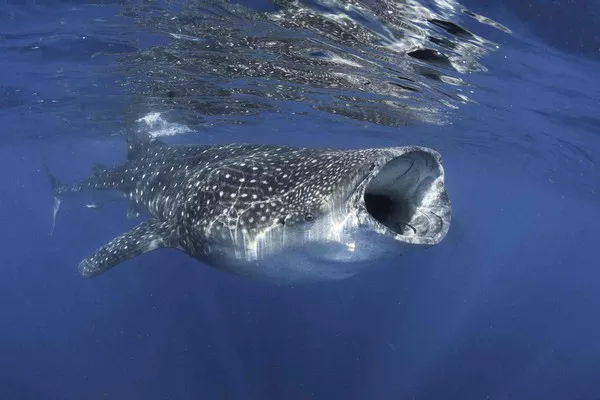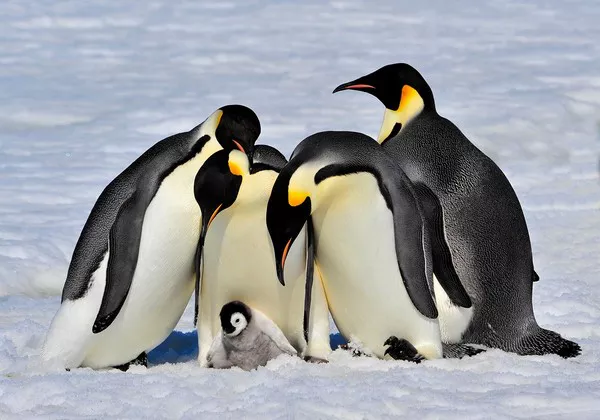In the vast tapestry of life on Earth, some species have mastered the art of longevity, defying the passage of time with remarkable resilience. From the depths of the ocean to the ancient forests, these creatures have stood the test of time, offering insights into the mysteries of aging and survival. In this article, we embark on a journey to discover the ten longest-lived animals, uncovering the secrets behind their extraordinary lifespans.
Top 10 Longest-Lived Animals
1. Greenland Shark (Somniosus microcephalus)
Topping the list as one of the longest-lived vertebrates on the planet is the Greenland Shark, an elusive denizen of the frigid waters of the Arctic and North Atlantic oceans. With a lifespan estimated to exceed 400 years, these slow-growing giants have captured the imagination of scientists and researchers worldwide.
Habitat: Greenland Sharks inhabit deep-sea environments, where they navigate the dark depths in search of prey, including fish, seals, and even carrion.
Longevity Secrets: Scientists attribute the remarkable longevity of Greenland Sharks to their slow metabolic rate, low reproductive rate, and efficient DNA repair mechanisms. Additionally, their cold, oxygen-rich habitat may contribute to slowing down the aging process.
2. Bowhead Whale (Balaena mysticetus)
As the longest-lived mammal on Earth, the Bowhead Whale reigns supreme in the icy waters of the Arctic. With an estimated lifespan of over 200 years, these majestic marine giants have witnessed centuries of environmental change and adaptation.
Habitat: Bowhead Whales inhabit the cold, nutrient-rich waters of the Arctic and sub-Arctic regions, where they feed on zooplankton, krill, and small fish.
Longevity Secrets: The Bowhead Whale’s remarkable longevity can be attributed to its large body size, which reduces predation risk, as well as its slow metabolic rate and efficient cellular repair mechanisms. Additionally, their isolation from human activities in remote Arctic waters may contribute to their extended lifespan.
3. Ocean Quahog (Arctica islandica)
Beneath the waves of the North Atlantic Ocean lies a humble bivalve with an extraordinary secret: the Ocean Quahog, a species of clam renowned for its exceptional longevity. With some individuals surpassing 500 years of age, these unassuming mollusks hold the title of the longest-lived invertebrates.
Habitat: Ocean Quahogs inhabit the sandy or muddy seabeds of the North Atlantic, where they filter-feed on plankton and organic debris carried by ocean currents.
Longevity Secrets: The longevity of Ocean Quahogs is thought to be linked to their slow growth rate, low metabolic activity, and resistance to cellular damage. Additionally, their ability to withstand extreme environmental conditions, such as low oxygen levels and fluctuations in temperature, may contribute to their longevity.
4. Aldabra Giant Tortoise (Aldabrachelys gigantea)
Roaming the remote coral atolls of the Aldabra Islands in the Indian Ocean is the Aldabra Giant Tortoise, a living relic of prehistoric times. With a lifespan exceeding 150 years, these iconic reptiles have become symbols of longevity and resilience.
Habitat: Aldabra Giant Tortoises inhabit the lush, tropical landscapes of the Aldabra Atoll, where they graze on grasses, leaves, and succulent plants.
Longevity Secrets: The longevity of Aldabra Giant Tortoises is attributed to their slow growth rate, late sexual maturity, and efficient energy utilization. Additionally, their isolated island habitat has shielded them from many of the threats faced by their counterparts on mainland continents.
5. Koi Fish (Cyprinus carpio)
In the tranquil ponds and water gardens of Japan, the Koi Fish swims as a symbol of beauty, grace, and longevity. With some individuals living for over 200 years, these ornamental carp have captivated fish enthusiasts and collectors for centuries.
Habitat: Koi Fish are domesticated varieties of the common carp (Cyprinus carpio) and are often kept in ponds and water gardens for their vibrant colors and graceful movements.
Longevity Secrets: The longevity of Koi Fish is influenced by factors such as genetics, diet, water quality, and environmental conditions. Selective breeding practices aimed at enhancing desirable traits, including longevity, have contributed to the impressive lifespans observed in these ornamental fish.
6. Red Sea Urchin (Mesocentrotus franciscanus)
Beneath the waves of the Pacific Ocean lies a creature with a remarkable ability to defy the ravages of time: the Red Sea Urchin. With a lifespan exceeding 200 years, these spiny echinoderms serve as guardians of the kelp forests and rocky reefs they call home.
Habitat: Red Sea Urchins inhabit the rocky seabeds of the Pacific Coast of North America, where they graze on algae and detritus using their specialized feeding appendages.
Longevity Secrets: The longevity of Red Sea Urchins is linked to their slow growth rate, low metabolic activity, and efficient cellular repair mechanisms. Additionally, their ability to withstand fluctuations in temperature, salinity, and water quality contributes to their longevity in dynamic marine environments.
7. African Elephant (Loxodonta africana)
As the largest land mammal on Earth, the African Elephant commands awe and respect in the savannas and forests of sub-Saharan Africa. With a lifespan averaging 60 to 70 years, these iconic pachyderms exhibit remarkable longevity in the wild.
Habitat: African Elephants inhabit a variety of habitats, including grasslands, woodlands, and forests, where they forage on a diverse array of vegetation, including grasses, leaves, bark, and fruits.
Longevity Secrets: The longevity of African Elephants is influenced by factors such as genetics, diet, habitat quality, and social structure. Strong family bonds and cooperative behavior within elephant herds may contribute to their ability to navigate challenges and survive into old age.
8. Galápagos Giant Tortoise (Chelonoidis nigra)
In the volcanic archipelago of the Galápagos Islands, the Galápagos Giant Tortoise reigns as a symbol of evolution, adaptation, and endurance. With a lifespan exceeding 100 years, these ancient reptiles have become synonymous with the unique biodiversity of the Galápagos.
Habitat: Galápagos Giant Tortoises inhabit various ecosystems across the Galápagos Islands, including dry forests, highland grasslands, and coastal mangroves, where they browse on a variety of vegetation.
Longevity Secrets: The longevity of Galápagos Giant Tortoises is linked to their slow growth rate, low metabolic activity, and ability to store water and nutrients for extended periods. Additionally, their isolated island habitats have shielded them from many of the threats faced by their counterparts on mainland continents.
9. Rougheye Rockfish (Sebastes aleutianus)
In the cold, nutrient-rich waters of the North Pacific Ocean, the Rougheye Rockfish holds sway as one of the longest-lived fish species known to science. With a lifespan exceeding 200 years, these deep-sea denizens embody the resilience and adaptability of marine life.
Habitat: Rougheye Rockfish inhabit deep-sea environments, ranging from rocky reefs to continental slopes, where they feed on a variety of prey, including fish, crustaceans, and squid.
Longevity Secrets: The longevity of Rougheye Rockfish is attributed to their slow growth rate, late sexual maturity, and ability to withstand extreme environmental conditions, such as low temperatures and high pressures. Additionally, their deep-sea habitat provides refuge from many of the predators and disturbances encountered in shallower waters.
10. Giant Galápagos Tortoise (Chelonoidis nigra)
Rounding out our list is another member of the Galápagos Giant Tortoise family, renowned for its remarkable longevity and iconic status in the Galápagos Islands. With a lifespan exceeding 100 years, these ancient reptiles serve as ambassadors for conservation and biodiversity.
Habitat: Giant Galápagos Tortoises inhabit various ecosystems across the Galápagos Islands, where they play a crucial role in shaping vegetation dynamics and nutrient cycling through their grazing and browsing activities.
Longevity Secrets: The longevity of Giant Galápagos Tortoises is linked to their slow growth rate, low metabolic activity, and ability to survive extended periods without food or water. Additionally, their unique evolutionary history and adaptation to island life have enabled them to thrive in the dynamic and often harsh environments of the Galápagos.
Conclusion
In conclusion, the ten longest-lived animals on Earth offer glimpses into the intricate tapestry of life and the secrets of longevity that have evolved over millennia. From the depths of the ocean to the remote islands of the Galápagos, these extraordinary creatures inspire awe and wonder, reminding us of the resilience and adaptability of life in all its forms.
You Might Be Interested In:
























